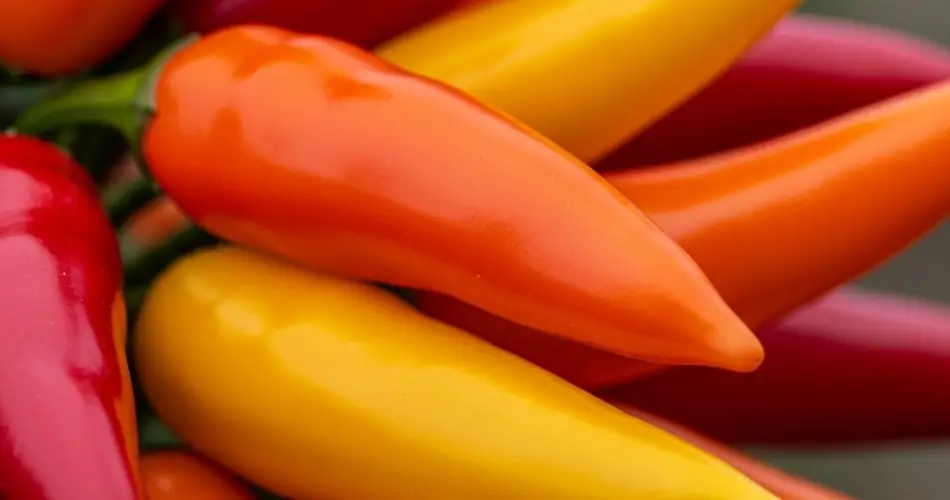Chili peppers are a favorite among home gardeners for their bold flavor, wide variety, and vibrant appearance. Whether you’re growing mild jalapeños or fiery habaneros, these plants can be productive and rewarding. However, even experienced gardeners can run into challenges when growing chili peppers.
From pests and diseases to environmental stress, chili peppers can face several common problems that may affect their growth and yield. Understanding these issues early and knowing how to manage them is key to a successful harvest. Here’s a detailed guide to the most frequent problems chili pepper growers encounter and how to fix them.
1. Poor Germination
One of the first challenges many gardeners face is poor seed germination. Chili pepper seeds can be slow to sprout, especially in cooler conditions.
Causes:
-
Low soil temperature
-
Old or low-quality seeds
-
Soil that’s too wet or too dry
Solutions:
-
Use a seedling heat mat to maintain soil temperatures between 75–85°F (24–29°C).
-
Start seeds indoors in a warm, consistent environment.
-
Use fresh seeds and plant them in a light, well-draining seed-starting mix.
2. Yellowing Leaves
Yellowing leaves can appear at any stage of growth and often signal stress or nutritional imbalances.
Possible reasons:
-
Overwatering or underwatering
-
Nitrogen deficiency
-
Poor drainage
Solutions:
-
Water only when the top inch of soil is dry.
-
Ensure containers or garden beds have proper drainage.
-
Apply a balanced fertilizer, or one slightly higher in nitrogen, if leaf yellowing is widespread.
3. Leaf Curling
Chili pepper leaves curling inward or downward can look alarming but are usually a symptom of environmental or pest-related stress.
Common causes:
-
Aphid infestations
-
Heat stress or sudden temperature changes
-
Over-fertilization
Fixes:
-
Inspect leaves (especially undersides) for tiny pests and treat with insecticidal soap if needed.
-
Provide shade during extreme heat.
-
Avoid overfeeding with nitrogen-rich fertilizers.
4. Flowers Falling Off
It’s frustrating when healthy pepper plants develop flowers, only for them to drop without forming fruit.
Causes:
-
Temperature extremes (below 60°F or above 90°F)
-
Lack of pollination
-
Inconsistent watering
How to help:
-
Maintain steady watering habits to avoid plant stress.
-
Hand-pollinate using a small brush or by gently shaking the plant to help pollen transfer.
-
Use shade cloth in extreme heat or bring container plants indoors during cool nights.
5. Fruits Not Setting
Sometimes, flowers remain on the plant but do not develop into fruit.
Common reasons:
-
Too much nitrogen
-
Poor pollination
-
High humidity
Solutions:
-
Reduce nitrogen and use a fertilizer with more phosphorus and potassium.
-
Encourage bees and other pollinators, or hand-pollinate.
-
Improve airflow to reduce humidity around the plants.
6. Blossom End Rot
This condition shows up as dark, sunken spots at the bottom of the fruit and is especially common in container-grown peppers.
Cause:
-
Calcium deficiency, often related to inconsistent watering
Prevention:
-
Keep soil consistently moist but not soggy.
-
Add crushed eggshells, bone meal, or a calcium supplement to the soil.
-
Avoid using too much high-nitrogen fertilizer, which can affect calcium absorption.
7. Pests
Several pests target chili peppers, including:
-
Aphids: Small green or black insects that cluster on leaves and stems.
-
Spider mites: Tiny, web-spinning pests that suck plant juices.
-
Whiteflies: Flying insects that weaken plants and spread disease.
-
Pepper maggots: Larvae that tunnel inside developing fruits.
Controls:
-
Spray plants with neem oil or insecticidal soap.
-
Introduce beneficial insects like ladybugs.
-
Keep your garden area clean and free of debris.
8. Fungal Diseases
Warm, humid conditions can lead to fungal issues like powdery mildew, root rot, and leaf spots.
Symptoms:
-
White powdery coating on leaves
-
Brown or black spots
-
Wilting or yellowing even when soil is moist
Treatment and prevention:
-
Water at the base of the plant to keep leaves dry.
-
Avoid overhead watering.
-
Ensure good air circulation between plants.
-
Use copper-based fungicides for serious outbreaks.
9. Sunscald
Peppers exposed to intense sunlight can develop pale, blistered patches—known as sunscald.
Fix:
-
Provide partial shade during peak afternoon sun.
-
Encourage healthy leaf growth to shade the fruit naturally.
-
Avoid removing too many lower leaves during pruning.
10. Stunted Growth
If your chili pepper plants aren’t growing as expected, several factors could be to blame.
Potential causes:
-
Poor soil quality
-
Crowded roots in containers
-
Low light or too much shade
Improvement tips:
-
Use well-draining, nutrient-rich soil.
-
Repot into larger containers if roots are compacted.
-
Ensure the plant gets at least 6–8 hours of direct sunlight per day.
Final Thoughts
Chili peppers are generally low-maintenance, but they do require attention to environmental conditions, pests, and nutrient levels. Most problems are manageable with timely care and observation. By recognizing the early warning signs and addressing them promptly, you can ensure a robust and productive pepper crop. With patience and proper management, your chili plants will reward you with an abundance of flavorful, spicy fruits.



